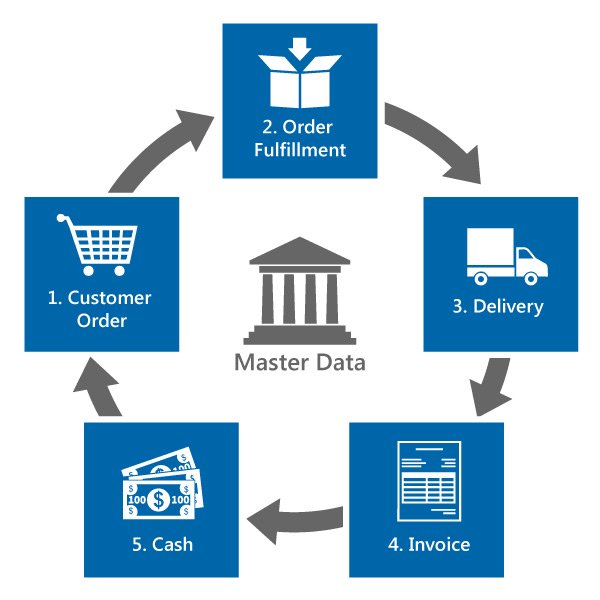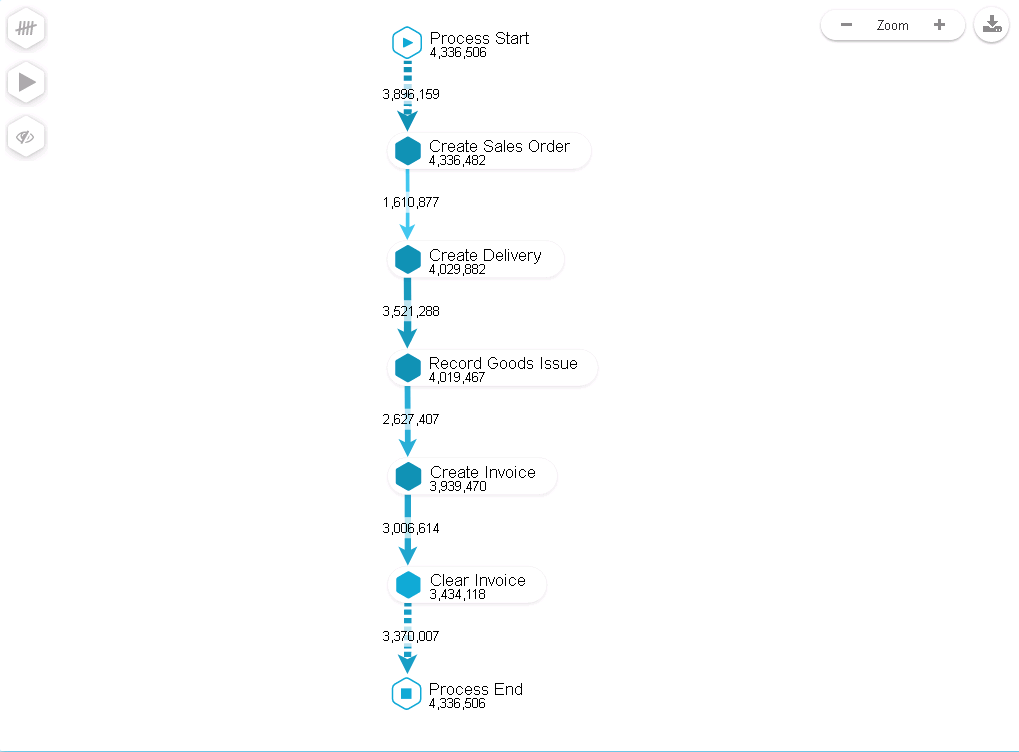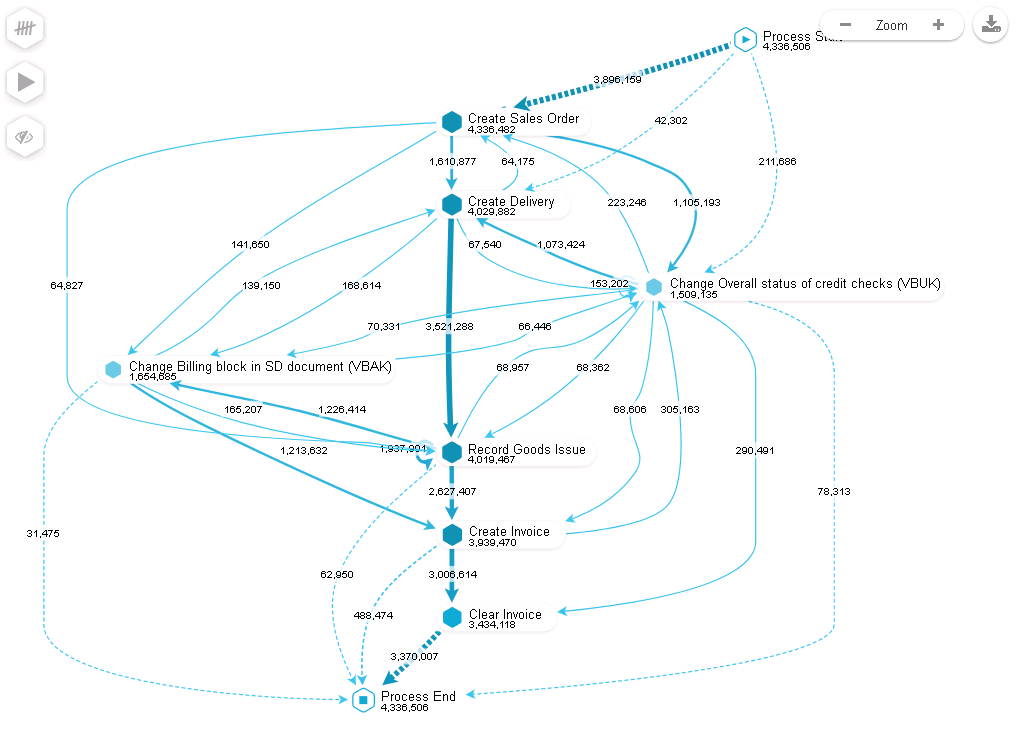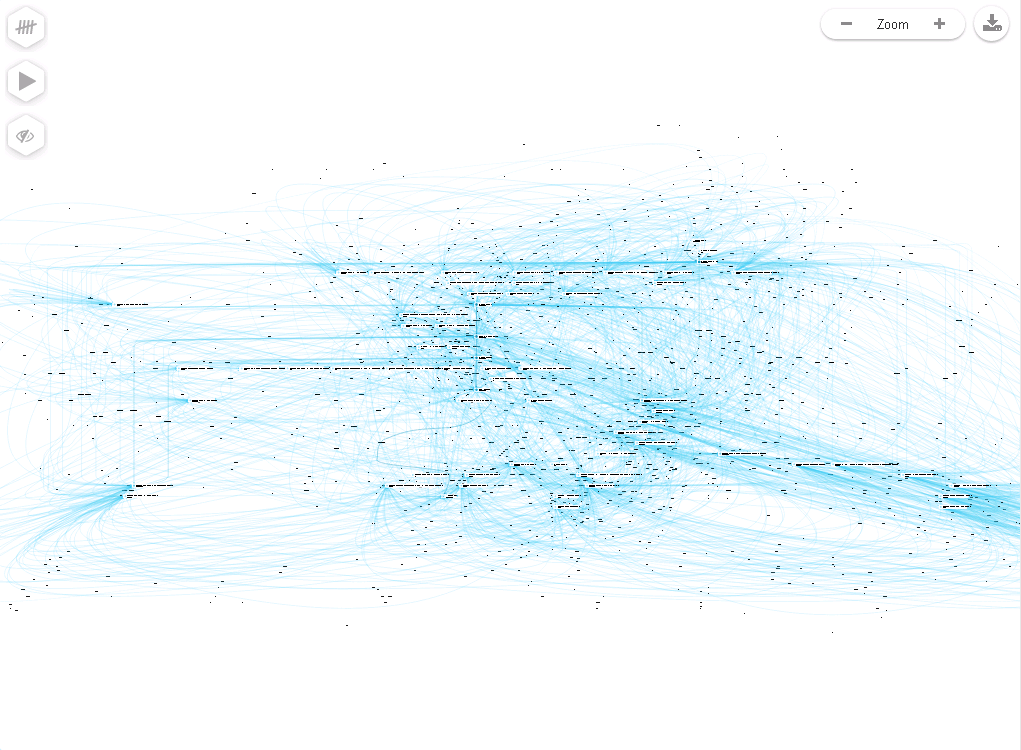From Data to Sustainability: A Greener Future with Process Mining

As with any process, process optimization is the key. Whether you are looking for serving customer more efficiently or trying to minimize errors and delays, order to cash is a great Process Mining use case that can yield great returns. If you're not familiar with Process Mining, read our article about Process Mining!
Establishing a frictionless order to cash process should be a priority for all companies as they look towards the future.
Order to cash refers to a business processes for receiving and processing customer orders for goods and services and their payment. Optimizing this process eliminates inefficiencies and can produce benefits seen throughout the entire business. If the processes are managed inaccurately, organizations could face major financial problems and reputational issues.
However, in this blogpost only order to cash that is directly or indirectly attributed to a specific sales order item. Other activities such as master data management or accounts receivable will be discussed in future blog posts!
The typical order to cash process consists of multiple steps. Those steps are typically as follows:

As is usually the case, this is an ideal scenario that in reality very often differs and deviates. There can be cancellations or changes along the way in different stages of the process. That is why leveraging the Process Mining techniques is vital – it can explore and observe the as-is process without guessing or assumptions.
In the following picture you can see how an order to cash process can look in an ideal scenario compared to the “messy” actual process displayed with all the deviations and imperfections.
In the first picture you can see the so called "Happy path". This is what the process looks like in the majority of scenarios.

Next you can see a little "less happy path" with some additional activities and connections. You might notice first issues or bottlenecks in the O2C process.

And last, if you include all the activities and connections between them, the Celonis path becomes unreadable.

Do you still think that there is nothing to improve in your process?
Based on the previous comparison, a couple of questions undoubtedly arise (as they should) - What can our company improve? What is happening in our process? Is our process efficient? How many cases are processed correctly without any deviations? What are the issues costing the company?
All those questions are valid and can be answered with analytics and convenient reporting dashboards. From our experience, some of the major issues in order to cash process can be as follows:
Let’s take a look at an example from Celonis blog. The article discusses the on-time delivery implications in order to cash process.
The problem is simple. Customer orders some goods from your company and expects them to be delivered by a certain date. For whatever reason this doesn’t happen, and the goods are delivered late or not at all (or too early). Each company should strive for on-time delivery on requested date as this directly impacts customer satisfaction, it could imply penalties for late deliveries or even result in losing the customer all together.
With Process Mining this can be all solved easily and quickly – the relevant data is analyzed for trends and patterns via algorithms. A root-cause analysis provides a clear image of where company processes are functioning correctly and where they are not. As a result, necessary steps can be taken to resolve the situation.
In Celonis series, you can also find out how order rejections influence the order to cash process or what is a role of eBusiness in the problematics.
With the O2C process, no single person is responsible for the entire process from start to finish. In fact, multiple people are usually responsible for different parts of the process. Ultimately, the complexity of the O2C process makes it quite prone to issues ad inefficiencies.
The implementation of order to cash process is subjected to the standard Process Mining requirements. Hence, there are two vital items needed – sales order number and time stamp of the activity. From here it is possible to construct an event log for all your systems’ data.
Let’s say that in order to cash process we are interested in creation of the sales order. This is rather straight forward as the sales order creation activity would be any entry in the table that contains the sales orders. This sales order would be our unique primary key for the remainder of the process. From this table we could also easily obtain a sales order creation date which would be the time stamp for sales order creation. And just like that we have our first activity in the order to cash process.
There are obviously other cases that are not as trivial as sales order creation and require certain expertise (such as sales order items changes or linking the sales order to the invoice). This is where Processand can step in and help with the further implementation.
In order to cash process, multiple activities can be tracked. These are naturally project dependent and certain customers might face different issues than the others. Therefore, it’s always a good practice to adjust the order to cash process to the customer needs.
Some of the activities that are very common and that are usually being implemented in Process Mining task are:
Jakub Dvořák
Data Science Team Lead
It should be each company’s first priority to optimize order to cash process for various reasons.
A successful implementation of order to cash process in your company can be one of the many steps on your digital transformation journey to becoming a tech-savvy company!
Need help with order to cash? Contact us today!
Our company has implemented over 70 order to cash processes for various customers such as Swisscom or Deutsche Bahn. Whether you need some help or are simply interested in enhancing your current Process Mining setup, don’t hesitate to contact us.
We can help you deliver excellence to both your company and your customers.
Learn More About Process Mining.
Data processing
We use cookies to personalise content and ads, to provide social media features and to analyse our traffic. We also share information about your use of our site with our social media, advertising and analytics partners who may combine it with other information that you’ve provided to them or that they’ve collected from your use of their services. By clicking “Accept All Cookies” you agree that cookies are stored on your device, which assists us to help improve your website experience and help our marketing initiative. For additional information on how the cookies function, select the ”Manage Cookie Settings” or use the link here: Data Policy
Necessary
Necessary cookies help make a website usable by enabling basic functions like page navigation and access to secure areas of the website. The website cannot function properly without these cookies.
We use TYPO3 as a content management system (CMS). Cookies are used to store login information, for example.
We remember your data processing consent settings.
We use PHP to generate website content.
Analytics
Analytics cookies help website owners to understand how visitors interact with websites by collecting and reporting information anonymously.
We use Google Tag Manager to connect Google Analytics to our website.
We use Google Analytics to register a unique ID that is used to generate statistical data on how the visitor uses the website.